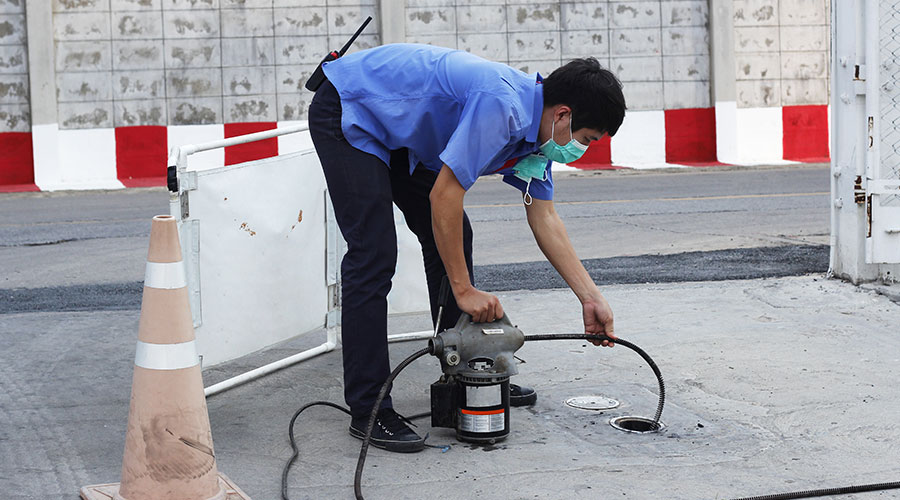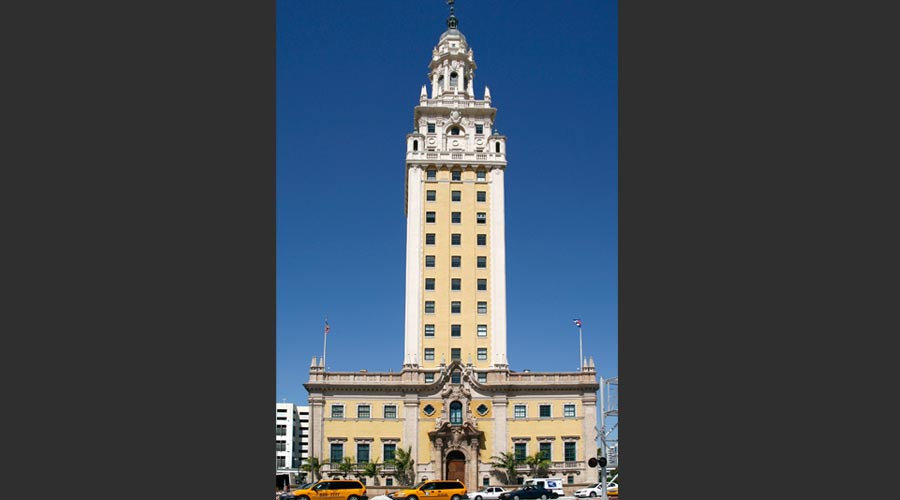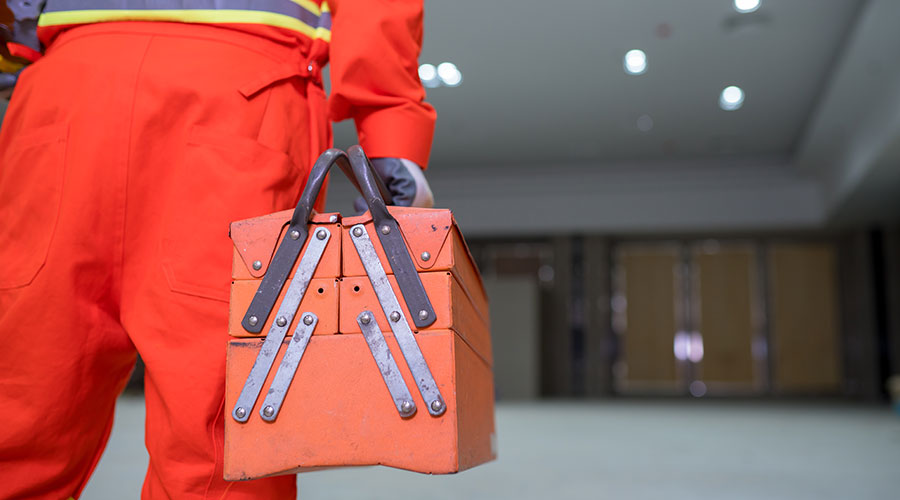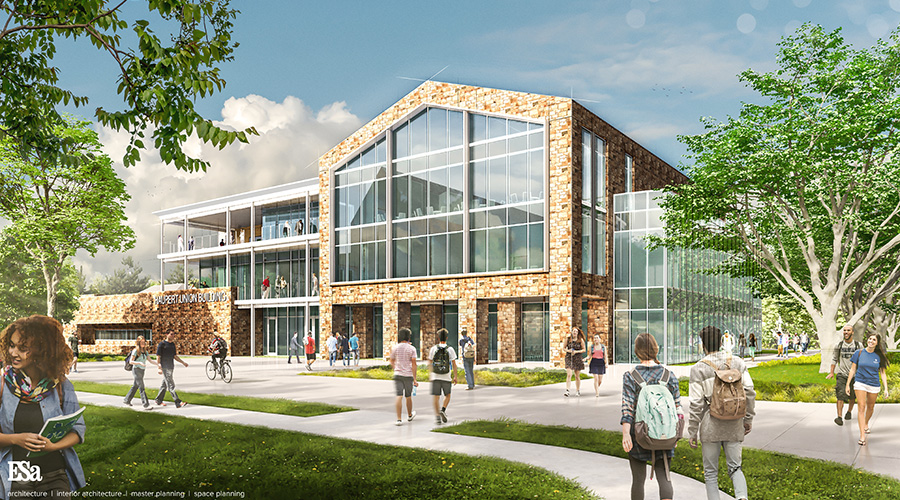Miami Dade College Celebrates Freedom Tower Centennial Anniversary with Renovation
Once a Cuban refugee center, iconic building now serves as education and museum honoring city’s history.
By Dave Lubach, Executive Editor
What started as a modest plan to upgrade an iconic building turned into a grand renovation to celebrate a historic moment.
Miami’s Freedom Tower has always held a special place in the minds of the community. This year, the building is celebrating its 100th anniversary and the current tenant, Miami Dade College, is planning a centennial celebration. The Freedom Tower’s birthday gift came in the form of a $25 million facelift with funding allocation from the State of Florida and other community and philanthropic donations so that the building can continue to thrive for another century, says Leo Bobadilla, the college’s vice president and chief facilities management officer.
But as with many century-old buildings, renovation crews encountered a few surprises along the way.
Time of the essence
Located in downtown Miami, the Freedom Tower building covers 92,000 square feet and rises 16 stories. As the original home for a city newspaper, the building later served as the Cuban Refugee Center from 1962 to 1974.
Following years of neglect, the Cuban American National Foundation purchased it in 1997 with the goal of renovating it, according to the National Parks Service website. Another Cuban American family purchased the building in 2005 and donated the building to Miami Dade College in 2005 to ensure its preservation for educational and historical purposes. According to the National Park Service, Miami Dade College is the largest Hispanic-serving institution of higher education.
“Today, the Freedom Tower serves several roles, including serving as a hub for learning and the universal quest for opportunity and freedom,” Bobadilla says. “This same history of human pursuits can be found in every corner of our country, and this building stands as a celebration of that history here in Miami.”
Miami Dade started the restoration project in 2022, realizing that time was of the essence to get the Freedom Tower renovations complete by 2025.
“There was very little flexibility since the building only celebrates its 100-year centennial birthday one time,” Bobadilla says.
As the college prepared for the centennial celebration, engineers took a deeper look into the building to assess its condition. While the conditions reflected the needs of a 100-year-old building, Bobadilla admitted more work was put on the table than originally anticipated.
“The project originally started as a maintenance project, with our facilities team contacted to repair a small piece of concrete that came loose from the building’s lowest level,” he says. “Once they started working on the repairs, they realized that there was more concrete spalling that required repair. At that point a structural engineer was contacted to come and review the condition and provide a plan for how to remediate the issues in the lower level.”
That led to finding enough other concerns that resulted in a full facility condition assessment that showed both long-term and immediate concerns.
“At lot of this stuff is not unusual for a facility of this age or in an environment where it’s near the ocean or salt water, so it was not a complete surprise, but we knew that we needed to immediately begin to address the most pressing issues,” Bobadilla says. “In addition, we did some additional assessments around HVAC systems, electrical, plumbing and interior, and we started developing a multi-year plan to address those issues.”
Historical challenges
Three years after Miami Dade College took over management of the Freedom Tower it was named to the National Register of Historic Places, a designation that places restrictions on the upgrades and renovations that can take place on the properties.
Standards for the treatment of designated historic buildings are established by the Secretary of Interior and address the preservation, rehabilitation, restoration and reconstruction of buildings. Updates to designated buildings must keep certain aspects of the structure to maintain the historic character of the properties intact.
The college wanted to preserve the building as close to theoriginal feel as possible regardless of the designation, but it did impact how engineers, architects and contractors approached the renovation.
“One of the steps we took initially was to minimize those challenges,” Bobadilla says. “In addition to having an architect like most traditional projects have, we also enlisted the services of a historical architectural firm to be part of the team. That helped tremendously, because they were able to go in, assess the facility through historical lenses, and look at where things needed to be done a little differently.”
A few of the historical construction areas that renovation crews needed to pay close attention to were building components such as windows, columns and walls with murals that often need to be preserved or restored to their original nature – as well as paint applications both on the interior and exterior of the building.
“There were plenty of surprises and plenty of unforeseen conditions, but nothing that the team was not able to overcome,” Bobadilla says. “It was important for us to have contingency plans at critical points on the schedule so we could quickly shift gears when the unexpected was discovered. As with all our projects this was a team effort.”
Areas of emphasis
Exterior renovation included cast stone repairs and waterproofing. Inside, the work included the modernization of elevators, renovations of restrooms and plumbing improvements, upgrades to fire alarms, access controls and mechanical and electrical system upgrades.
In addition to those upgrades, the museum that tells the history of the building and Miami was also upgraded and enhanced with new exhibits and renovated spaces.
One area that received special attention was the cupola, the tower on the building. Long-term exposure to salt water from the nearby Atlantic Ocean sped up the corrosion process.
“Saltwater can be very unforgiving,” Bobadilla says. “We have several facilities located near the ocean. We continuously monitor major building systems, especially anything on the roof. This vigilance ensures that our facilities remain functional and continue to perform as intended.”
The work at Freedom Tower also included a full painting of the structure to provide a first layer of defense against the elements, Bobadilla says. “Again, this required that the work be done in a very specific manner and specific colors to maintain the history of the facility,” he says.
The Freedom Tour’s centennial is a celebration of the city’s history and has been embraced by the public as seen by the grants and private donations that have rolled in to help with funding. As the grand opening date draws closer later this fall, Bobadilla and his team can’t wait to unveil the final product. The staff’s efforts were recently rewarded with the 2025 People’s Choice Award from the Florida Foundation for Architecture.
“I am very proud of the entire team of staff and vendors for their unwavering dedication and countless hours spent preparing the facility,” he says. “I am also grateful for the vision and support of our college president, and I am honored to have contributed to a cause that benefits our entire community. This has truly been a labor of love.”
Dave Lubach is the executive editor for the facilities market.
Related Topics:












